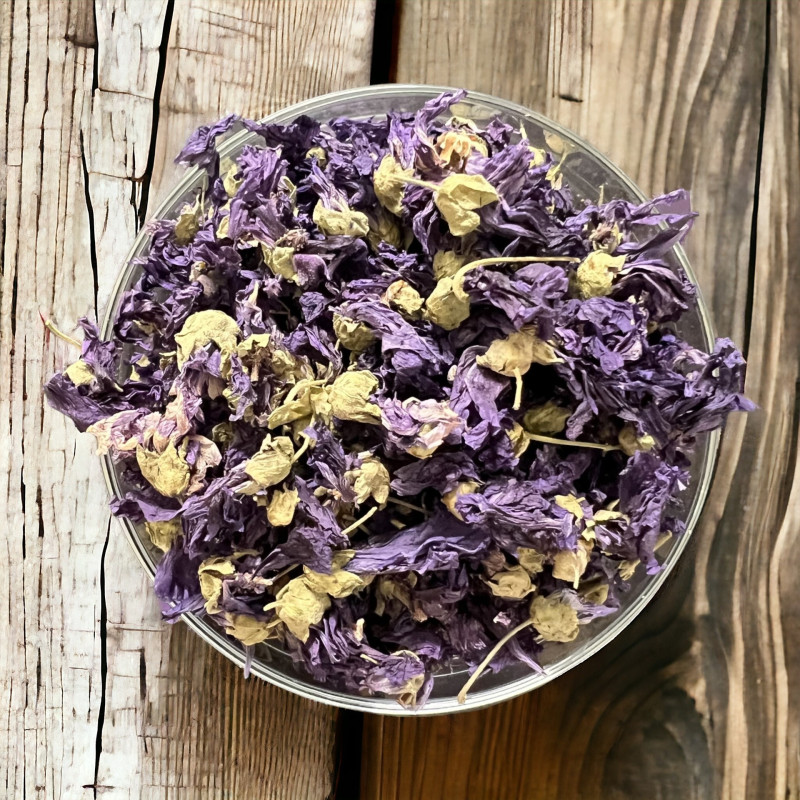
Reference: bleuet


Their deep blue color is absolutely stunning, and their taste is similar to marshmallow.
Use them for teas, lotions, plate or dish decorations, and even in potpourris.
 Delivery
Delivery
Mondial Relay
 Returns
Returns
See conditions
 Payments
Payments
100% secure
- Livré en sachet refermable -
Uses in Cooking and Beyond:
A true embodiment of gentleness, the entire mallow plant boasts numerous medicinal properties. In tea or decoction taken morning, noon, and evening, it helps soothe coughs and hoarseness. Its flavor is mild, somewhat reminiscent of marshmallow. In the 16th century, Italians called it "omnimorbia," or "remedy for all ailments," which may be an exaggeration, but it underscores the many benefits attributed to it.
When infused in hot water and applied as a lotion, it can treat inflammation, especially on delicate facial skin or areas irritated by insect bites.
The flower's stunning deep blue color also makes it ideal for decorating dishes, salads, or creating potpourris.
Mallow flowers were historically used to make dye... in yellow! When mallow flowers are infused in hot water, they swell instantly, turning the water a beautiful blue with dark blue swirls emanating from each flower. Given some time, the liquid gradually shifts from turquoise to pale green and finally to a stable yellow, explaining the dye obtained from it.
Who am I?
Origin: Iran (Mashad region) for regular flowers and Poland (Chjavian region) for larger flowers.
Scientific name: Malva sylvestris
Common names: High mallow, wild mallow, false marshmallow, woodland mallow
Mallow is a tall biennial herbaceous plant, growing 30 cm to 1.2 m in height, with a slender taproot. Its broad, green, lobed, and toothed leaves are covered with down. Flowers appear at the leaf axils, with five spaced, notched petals in a beautiful mauve with violet veins. Harvesting occurs upon blooming, from May to June.
This plant is common in temperate regions of Europe, North Africa, and Asia up to China. It grows along walls, in wastelands, and meadows.
A Little History:
As early as the 7th century BCE, mallow was already used as both a vegetable and a remedy. Its young shoots were a favorite delicacy of Cicero!
Data sheet
Reference: bleuet
Reference: rosepetale
Reference: 26545D
Reference: 112390010
Reference: bleuet
Reference: rosepetale
Reference: rosepetale
Reference: camomilleRom
Reference: 408190301
Reference: souci
Reference: 10M6810601
Reference: jasmin

Their deep blue color is absolutely stunning, and their taste is similar to marshmallow.
Use them for teas, lotions, plate or dish decorations, and even in potpourris.